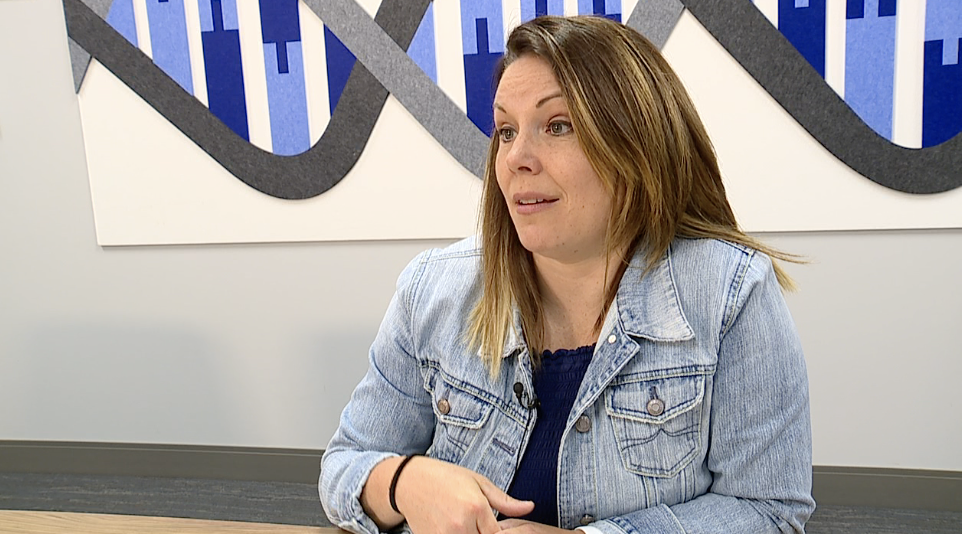KANSAS CITY, Mo — According to the Centers for Disease Control and Prevention, over 300 children in the United State die from drownings each year.
KSHB 41 is taking this topic 360 to add context and depth. We’re including voices and perspectives from:
- Parents
- A family who lost a loved one to a drowning
- A nurse with Children’s Mercy Hospital
- A nonprofit that offers lessons
- A swim instructor of color
A nurse with Children’s Mercy

Laura Kemerling is program manager at the Center for Childhood Safety at Children’s Mercy.
She told KSHB 41 that the hospital sees an average of 15 to 20 drownings a year. For every child who dies, there are seven or eight more who suffer from injuries.
Hospital staff say of all the drownings they see, about 80% are preventable.
“It’s often very quiet, so some people describe it as silent and it can happen within 30 seconds,” she said.
Kemerling said the risk of drowning increases exponentially if a child is underwater for one minute or longer.
She also explained that drowning can lead to other long-term consequences, even if a child lives.
“Severe neurological damage can be a concern,” she said. “It just depends on the degree of hypoxia or the lack of oxygen to the brain and vital organs.”
Kemerling recommends that people get trained in CPR, know how to locate and use AEDs and implement barriers like fencing around water.
They can all play a huge factor in mitigating risk.
For bystanders who may witness a dangerous situation, Kemerling recommends these four steps.
“Opening their airway, providing rescue breaths, checking for a pulse, then starting CPR is sort of the recommendation when there is a potential drowning,” Kemerling said.
Kansas City parents
KSHB 41 paid a visit to “The Spring,” one of the busiest public water parks in Kansas City, Missouri.
Parents say they implement water safety in various ways, including swim lessons, wearing safety gear and making sure children follow rules of the pool.
“When it comes to my 4-year-old, making sure she’s in swim lessons, because sometimes those floaties give them a false sense of safety,” Teresa Sportsman said.
Jim Bransfield also broke down some of the safety precautions he takes.
“No diving, no anything that’s going to cause you or somebody else to get hurt,” he said.
In addition to taking personal precautions, parents say keeping a close eye on every child is an extra line of defense.
“In the process of watching my two, I end up watching everybody, so it’s just like a family affair here," Romney Hartsfield-Hicks said. "Just everybody watching for everybody’s children."
Hartsfield-Hicks is a mother of three. With two young children and a special needs daughter, she says the learning never stops.
“All children are different, so it’s really just keeping yourself abreast on what is going on at that time,” Hartsfield-Hicks said.
A family who lost a loved one to a drowning

To this day, Deb Stewart and her family have more questions than answers. Last July, 6-year-old Adeline Stewart drowned while playing at Oceans of Fun.
She had taken swim lessons before and knew how to swim.
“Even if they’ve had swimming lessons, just know that they can be at a place where they reach exhaustion,” Stewart said. “You might not even notice that your child is drowning even if they’re close to you.”
While nothing will bring back her daughter, Stewart is suing the water park as she tries to bring about change in her daughter’s memory.
“Just so grateful for everything, she would make you smile,” Stewart said.
A nonprofit that offers lessons
For YMCA of Greater Kansas City, water safety has been top of mind since 1906. The nonprofit held over 10,000 swim lessons in 2022 and this year, it will teach over 12,000.
“We learned how to swim, we learned how to put our heads under water, we learned how to swim then float back,” said Sebation Chavez, who is learning to swim through the program.
Over the years, local sponsorships have been pivotal in extending access. For example, the “Joe Delaney Learn to Swim Program” is one of those opportunities focused on Wyandotte County.
“These partnerships go into targeted communities to make sure those most at risk of drowning have an opportunity to come and depending on the partnership, it is no expense to those families at all,” said Sabrah Parson, aquatics director for the YMCA.
Parsons says in addition to swim lessons, keep three things in mind:
- Reinforce with children to ask permission before entering any body of water.
- Make sure children are swimming with proper supervision at all times by an adult who is not distracted
- Consider learning CPR to become a trusted bystander
“The more educated and knowledgeable our communities are in life-saving skills, the better we are as a community,” Parsons said.
A swim instructor of color

John Pride is a life-long swimmer and a long-time instructor at the Y. He fell in love with the sport at an early age and joined his school’s first varsity team.
He saw and felt first-hand the economic and racial disparities when it comes to access in swimming.
“I was the only person of color on my swim team,” Pride said. “The first step is going to be acknowledging that the gap exists. More people have to acknowledge that.”
According to YMCA, Black children are eight times more likely to drown than white children.
Stopdrowningnow.org reports 79% of children with parents who make less than $50,000 have few, to no swimming skills.
It was not long ago public pools were segregated and access looked different. Then it became generational — kids did not know how to swim because their parents did not.
“It makes me sad, that that is still a thing in 2023,” Pride said.
Pride says it feels full circle to be back teaching in Wyandotte County where he grew up
“It’s like riding a bike, they’ll never forget it,” he said.
So as many jump in head-first into summer, make sure safety is the top priority. Invest in learning life-saving skills, stay vigilant in the water and always look out for each other.
—




